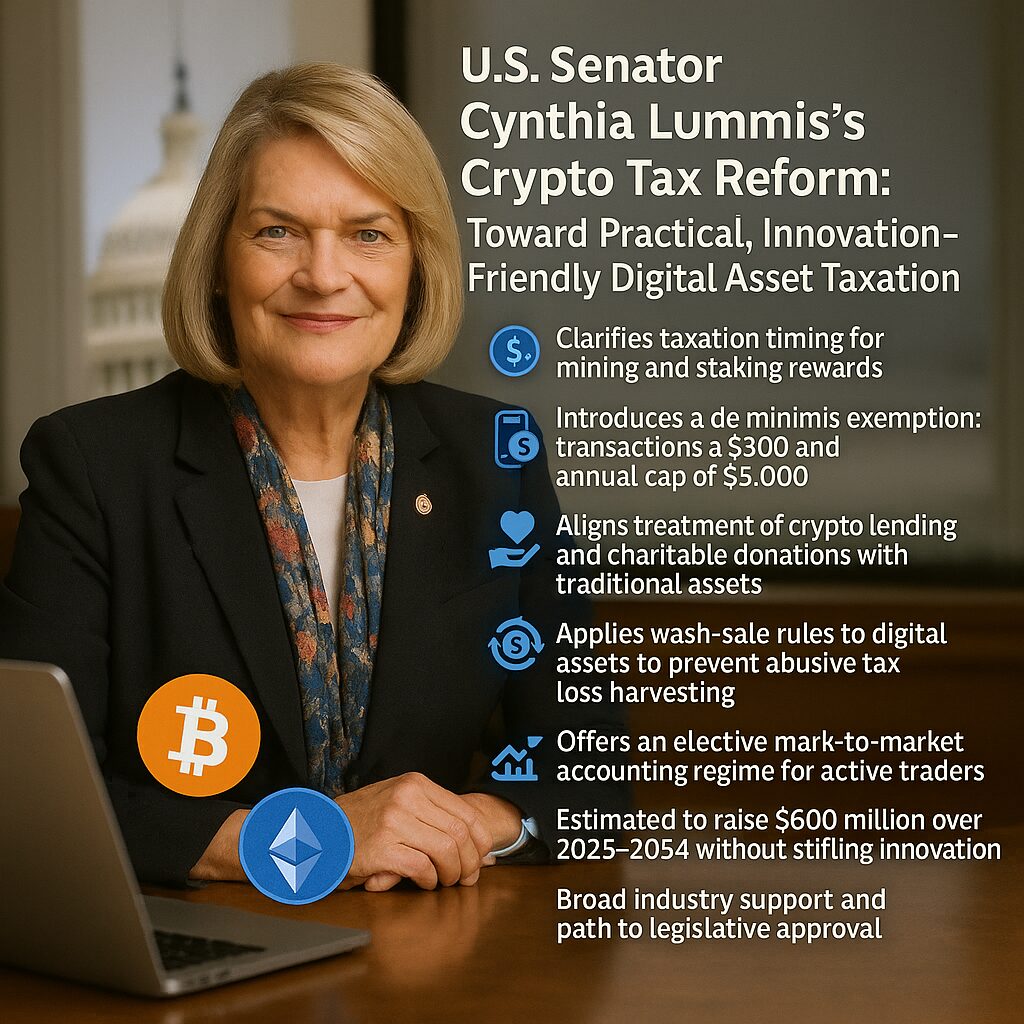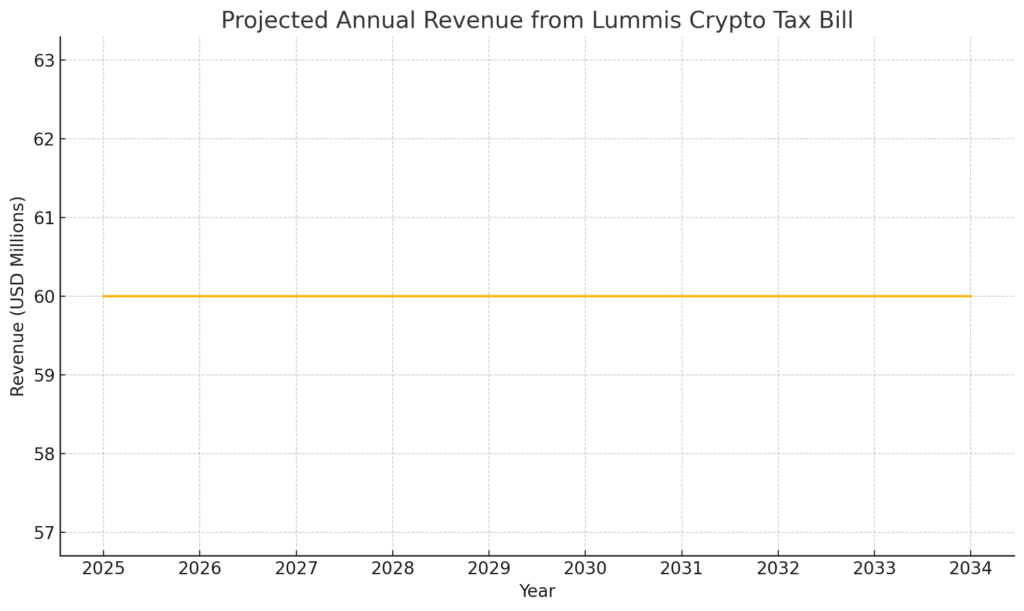
Main Points:
- Clarifies taxation timing for mining and staking rewards
- Introduces a de minimis exemption for everyday crypto payments (≤ $300 per transaction; $5,000 annual cap)
- Aligns treatment of crypto lending and charitable donations with traditional securities frameworks
- Applies wash-sale rules to digital assets to prevent abusive loss harvesting
- Offers an elective mark-to-market accounting regime for active traders
- Estimated to raise $600 million over 2025–2034 without stifling innovation
- Broad industry support and momentum from parallel stablecoin legislation
Clarifying Taxation Timing for Mining and Staking Rewards
Currently, miners and stakers face double taxation—once when they receive block rewards or staking income and again when they sell the underlying tokens. Lummis’s proposal defers income recognition until the digital assets are sold or exchanged, mirroring how other assets (like bonds or dividends) are taxed upon disposition. This change reduces cash-flow volatility and removes uncertainty over fair-market valuations at receipt.
Introducing a De Minimis Exemption for Everyday Transactions
To promote real-world crypto use (e.g., buying coffee), the bill establishes a new Section 139J: a de minimis exclusion for digital-asset transactions valued at $300 or less, with a $5,000 annual cap and an aggregation rule for related transfers. An inflation adjustment begins in 2026. This treats small crypto purchases like foreign currency exchanges and spares retail users from onerous reporting burdens.
Projected Revenue Impact
Below is the estimated annual revenue generation—approximately $600 million over the 2025–2034 window (uniformly projected at $60 million per year for illustration):

Visualization generated with Python
Aligning Crypto Lending and Charitable Donations
The bill extends existing securities-lending tax treatment to digital-asset lending: temporary loans of cryptocurrencies would not trigger taxable events, increasing capital efficiency for DeFi platforms. Similarly, charitable gifts of crypto would be exempt from burdensome appraisal requirements, simplifying nonprofit fundraising and encouraging philanthropic use of digital assets.
Applying Wash-Sale Rules to Digital Assets
To curb abusive tax-loss harvesting—where investors sell tokens at a loss to offset gains and immediately buy them back—the proposal imposes a 30-day repurchase prohibition, paralleling the wash-sale rule for stocks. This fosters market integrity and aligns digital-asset and traditional-asset tax regimes.
Offering Elective Mark-to-Market Accounting
Recognizing that active traders often mark portfolios to market, the bill introduces an elective regime: those who qualify can report gains and losses based on year-end valuations rather than realized transactions. This streamlines accounting and may encourage professional trading firms to increase liquidity in crypto markets.
Legislative Path and Revenue Estimates
- Revenue: The Joint Committee on Taxation projects roughly $600 million in net revenue from 2025 to 2034, fully paying for the reforms without raising overall tax burdens.
- Process: Introduced as a standalone bill on July 3, 2025, Lummis is gathering public comments before committee debates in the Senate Banking Committee and eventual reconciliation with the “big, beautiful bill” or a standalone vote.
Industry Momentum and Related Legislation
Just weeks after the GENIUS Act passed on June 11, 2025—setting stablecoin collateral standards—this tax bill further signals U.S. commitment to modernizing crypto law. DeFi leaders like Stani Kulechov of Aave note that clearer rules attract traditional finance players frustrated with banks; Oracles like Chainlink are rolling out compliance frameworks to onboard trillions in institutional capital.
Conclusion
Senator Lummis’s bipartisan bill tackles core pain points—double taxation, compliance costs for retail users, and mismatches with traditional finance—while maintaining revenue neutrality. By clarifying tax timing, exempting small transactions, and aligning crypto with established tax regimes, the proposal aims to unleash mainstream adoption and institutional participation without sacrificing federal receipts. As public commentary closes and committee work begins, this legislation may mark a pivotal shift toward a more innovation-friendly digital-asset environment in the United States.

